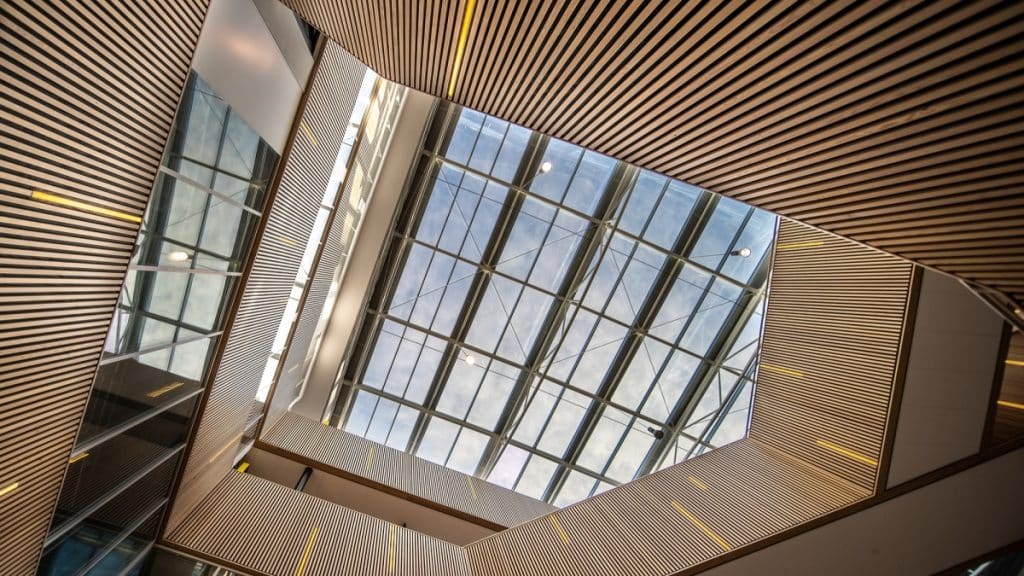Introduction
Defining Exterior Paneling: Understanding its Role in Modern Architecture
Exterior paneling, a pivotal element in contemporary architecture, not only serves as a protective skin for buildings but also significantly contributes to their aesthetic appeal. This architectural feature has evolved from merely a functional component to a significant aspect of design, offering both durability and style.
Historical Evolution of Exterior Paneling: Tracing its Origins and Development
The journey of exterior paneling, from rudimentary protective coverings to sophisticated design elements, mirrors the evolution of architectural trends. Initially used for shielding structures from harsh environmental elements, these panels have become an embodiment of modern architectural expressions.
Types of Exterior Paneling
Wood Paneling: A Timeless Classic
Wood, a material synonymous with warmth and tradition, remains a favorite in exterior paneling. Its natural beauty and versatility make it a sought-after choice for various architectural styles.
- Varieties of Wood and Their Characteristics
From cedar and redwood to oak and pine, each wood type brings its unique texture, color, and durability, offering architects and homeowners a broad spectrum of options.
- Maintenance and Longevity of Wood Paneling
While exuding elegance, wood paneling requires regular maintenance to preserve its appearance and structural integrity, ensuring it withstands the test of time.
Vinyl Paneling: The Modern, Cost-Effective Solution
Vinyl paneling has emerged as a practical alternative to traditional materials, offering ease of installation and minimal upkeep.
- Benefits of Using Vinyl
This synthetic option is not only cost-effective but also resistant to moisture, rot, and pests, making it a durable choice for exterior applications.
- Installation and Durability
Vinyl’s lightweight nature simplifies installation, and its resilience ensures longevity, reducing the need for frequent replacements.
Metal Paneling: The Contemporary Choice
Metal paneling, with its sleek and modern appeal, is increasingly popular in contemporary architecture.
- Different Metals Used
Aluminum, steel, and copper are among the commonly used metals, each adding a distinct character and strength to building exteriors.
- Advantages in Terms of Strength and Style
Metal panels are not only strong and fire-resistant but also offer a range of finishes and colors, allowing for creative expressions in design.
Fiber Cement Paneling: A Blend of Tradition and Innovation
Fiber cement, a composite material, has gained prominence due to its durability and aesthetic versatility.
- Composition and Environmental Impact
Comprising cement, cellulose fibers, and other materials, fiber cement panels are known for their resilience and sustainability.
- Aesthetic Appeal and Versatility
These panels mimic the appearance of wood, stone, or brick, providing an eco-friendly alternative without compromising on style.
Design Considerations
Aesthetic Value of Exterior Paneling: Enhancing Building Facades
Exterior paneling plays a critical role in defining the visual character of buildings, offering architects a canvas to showcase creativity and innovation.
Color and Texture Options: Creating Unique Visuals
The choice of color and texture in paneling can dramatically alter the appearance of structures, enabling designers to craft unique and appealing facades.
Architectural Styles and Paneling: A Symbiotic Relationship
The interplay between architectural styles and paneling choices can result in harmonious or strikingly contrasting designs, each telling a distinct story.
Customization and Creativity in Paneling Design
The flexibility in designing exterior panels allows for a high degree of customization, catering to specific aesthetic and functional requirements.
Technical Aspects
Installation Process: Step by Step Guide
Installing exterior paneling involves a series of steps, each critical to ensuring the structural integrity and appearance of the finished product.
Weather Resistance: Dealing with Environmental Challenges
Paneling materials must be chosen and installed considering their ability to withstand local weather conditions, ensuring longevity and reducing maintenance needs.
Insulation and Energy Efficiency: A Hidden Benefit
Apart from aesthetics, exterior paneling can enhance a building’s energy efficiency by providing additional insulation, contributing to a more sustainable environment.
Safety Standards and Regulations: Compliance and Best Practices
Adherence to safety standards and building codes is paramount in the installation of exterior paneling, ensuring the safety and compliance of the structure.
Maintenance and Upkeep
Routine Maintenance Tips: Ensuring Longevity
Regular maintenance, including cleaning and inspecting for damage, is crucial to preserve the appearance and functionality of exterior panels.
Repair and Replacement Strategies: When to Update or Overhaul
Understanding when to repair or replace paneling can save costs and maintain the structural integrity of buildings.
Cleaning and Caring for Different Materials
Different paneling materials require specific cleaning and care techniques, essential for maintaining their condition over time.
Environmental Impact and Sustainability
Eco-Friendly Paneling Options: Green Building Materials
The shift towards eco-friendly materials reflects a growing awareness of environmental impacts, with options like recycled and sustainable materials gaining traction.
Recycling and Reusability: The Future of Exterior Paneling
The potential for recycling and reusing paneling materials is an important consideration in sustainable building practices.
Regulatory Compliance and Sustainable Practices
Meeting environmental regulations and adopting sustainable practices in the production and use of exterior paneling are crucial for the future of construction.
Conclusion
Future Trends in Exterior Paneling: Innovations on the Horizon
The future of exterior paneling lies in the continual innovation of materials and techniques, driven by aesthetic trends and environmental considerations.


